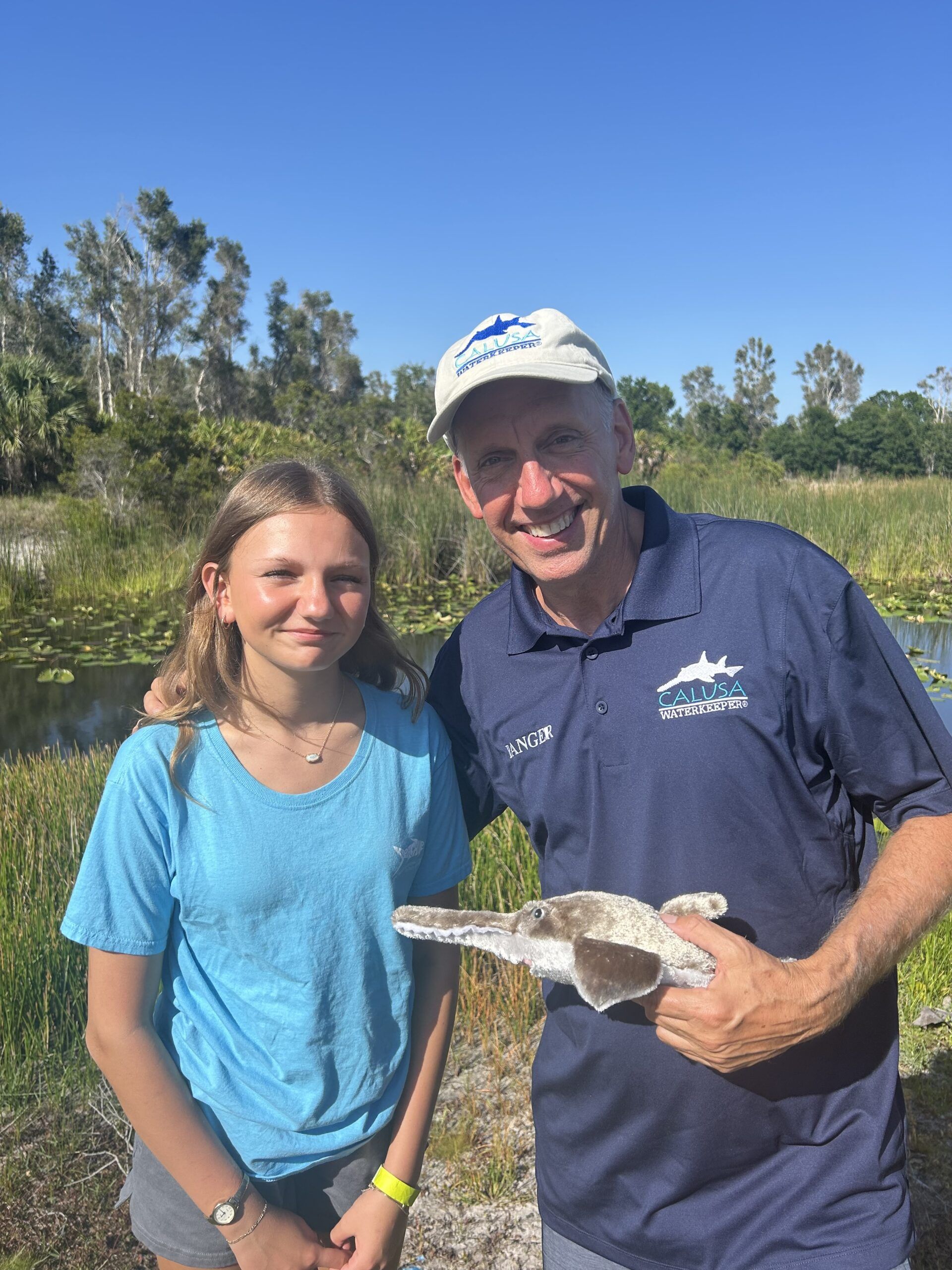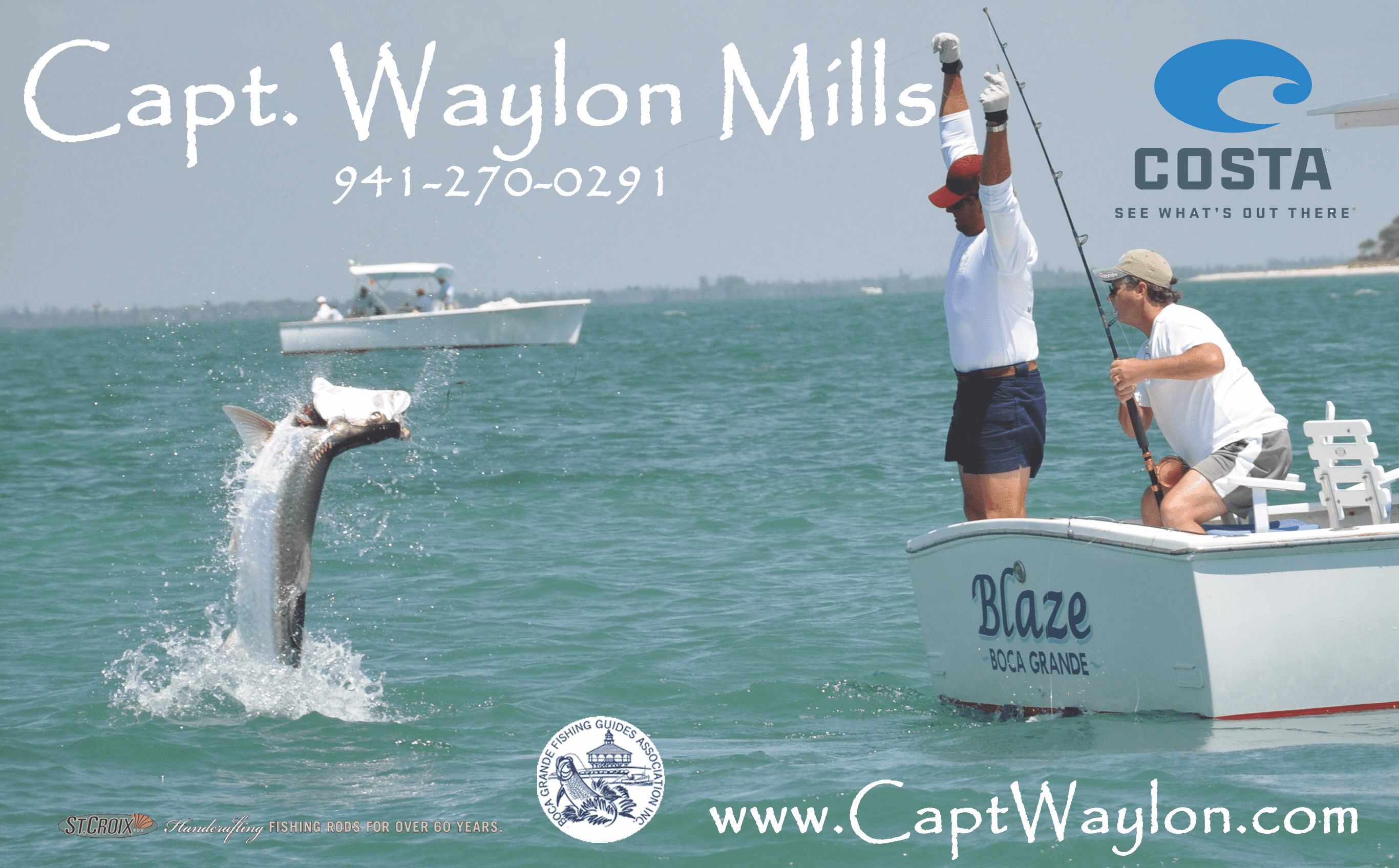IN THE SPOTLIGHT: Calusa Waterkeeper, Joe Cavanaugh

Our water watchman
A new Calusa Waterkeeper recently joined the mission of protecting Southwest Florida’s water resources from pollution, misuse and overdevelopment. Joe Cavanaugh now holds this position and is already working to build alliances, share his knowledge and put his experience to work for the public good.
Joe brings with him years of experience.
“I was 15 years with the National Oceanic and Atmospheric Administration (NOAA), National Fisheries Service in St. Petersburg,” he said. “The last few years I have been working remotely from Venice, where I live now. And with everything that’s going on with the federal government right now, I took an early retirement. Then, right before that, this job opportunity came up as the Waterkeeper, and I applied. And about a week before I left NOAA I had this job lined up, so it was meant to be.”
He continued: “A lot of the work I did at NOAA focused on a huge region, from Texas to North Carolina, including all the Gulf states, down to the Virgin Islands, the American part of the Caribbean. But a lot of our focus was on Southwest Florida, and a lot of it focused on the Caloosahatchee River and smalltooth sawfish, which is an elasmobranch, among the endangered sharks, rays and such.”
He noted that the smalltooth sawfish was the first shark or ray to be listed under the Endangered Species Act, and its critical habitat was designated not too long ago.
“When I came to NOAA, I started working on smalltooth sawfish projects or projects that impacted smalltooth sawfish development in Cape Coral and throughout the Caloosahatchee and Charlotte Harbor,” Joe said. “So I became very familiar with sawfish. And that is one of the connecting points with Calusa Waterkeeper.”
In fact, the sawfish is used as a symbol or trademark for the Calusa Waterkeeper organization, recognizing that the part of the Caloosahatchee River closest to the Gulf is known as a major “pupping” area for this endangered species. Joe said there are at least four major areas in the Caloosahatchee, as well as a spot in the waters off Boca Grande, that are especially important to the development of juvenile sawfish. He said nearly 50 percent of the species’ nursery area is in the lower reaches of the Caloosahatchee.
The species is ancient, but the reproductive rates are small and the time between birth and maturity is long. To keep the species from becoming extinct, it is important to protect the areas that are ideal for its development.
Another connection between Joe’s interests and the Waterkeeper’s is the respect for and dedication to fostering citizen science work. Before his work with NOAA, Joe worked in the Florida Keys as director of field operations and assistant science manager for Reef Environmental Education Foundation.
“With that group I led citizen science diving teams in Florida and the Caribbean and other places, doing coral reef assessments and such. So, I have become pretty familiar with the Caloosahatchee River and spent some time out with the Fish and Wildlife Research Institute, doing tagging of sawfish. I spent a lot of time when I was with the National Fisheries agency trying to get extra conservation measures and best management practices that would help sawfish, given all the development — and when I say ‘development,’ it’s in-water development, marinas, the dredging projects, all those things that impact the habitat for sawfish.”
Joe noted that these endangered rays originally were captured for their rostrums, their long snout-like appendage that is so unique. Like ostrich feathers, elephant tusks and other unusual parts of many animals, the rostrums were collected as curiosities – almost to the point of extinction for the creature. It was sawfish work that brought Joe into close contact with Gasparilla Island.
“I had an opportunity to work with the Gasparilla Island Conservation Association on the Mercabo Project,” he said. “That work included integrating some sawfish tags and acoustic receivers for that area. Also, a lot of the habitat was shaped to be a living shoreline, less than three feet deep, which it turns out is very important for sawfish. They need red mangroves and shallow, soft-sediment habitat, less than three feet deep. Those are two of the essential features—the only two—for their critical habitat,” he said.He explained that the Mercabo Project included planting red mangroves—and filling the cove to raise its floor so the water would be no deeper than three feet. He has also worked with Mote Marine Laboratory with Dr. Jim Locascio, through NOAA.
“My girlfriend at the time—and still my girlfriend—Ashley Hill, was running the Mote office in Boca Grande. Until just a couple of years ago there was a little Mote office there. And they were doing a lot of different Mote initiatives related to the island. There was some work with the tarpon, work with the snook, and tagging and population assessment things that Mote was doing. They were also doing some red tide work,” he said.
Joe would sometimes use the Mote office as his remote headquarters, and also help out.
“So I got very familiar with the island, and at the same time I started doing the sea turtle walks with the Gasparilla Island Sea Turtle Association,” Joe said. “I did that for three or four seasons. That sort of got interrupted by COVID, and also my kids came to live with me and there were school schedules to keep.” He said he, Ashley and the two kids moved down from St. Pete to live in Venice.
Ashley (now fiancée, rather than girlfriend) is currently the marine debris coordinator for the state of Florida, for NOAA.
“We’d like to do the sea turtle walks again at some point. Not this season, but maybe next season. I still do sea turtle walks down on the Manasota beach, but unofficially, I just go out every nesting season and see the nesting turtles. Manasota Beach is probably the most populous loggerhead nesting area, after Gasparilla,” he said.
As Waterkeeper, he may eventually move closer to the Caloosahatchee, but he does not mind the commute to the office in Fort Myers, which he now does two or three days a week. He is traveling around the state to meet with other organizations that may have common interests. He is interested in collaborative work, and would like to explore the possibility of joint applications for funding on a larger scale than can usually be generated by a single organization.
“I am really good at working with people and finding the common connections,” he said without boasting.
He continued: “My role will be to run the Waterkeeper under the board of directors. We have an operational manager, and I’ll be the Waterkeeper and directing the four major citizen science programs—the Ranger Program, Water Quality Monitoring, Air Quality Research and Vertical Oyster Gardens. The Rangers is the big program for the citizen science, and I’ll be doing a lot of the advocacy. I’ll really be learning that, the advocacy. When I worked for National Fisheries Service there was no advocacy. It’s just straight science.”
He said the citizen science is directed toward collecting data to share with other institutions and other larger databases of the same type of data. He added that the organization will be joining Eyes on Seagrass, run by the Florida Sea Grant.
“And we’re also working with the Water Atlas,” Joe added. “That’s another collaborative effort with a very large database. We’ll be sharing our data with them, as well. I’ll be kind of enhancing partnerships, and being the main person for the advocacy—although we have an advocacy team. We have teams that are all volunteers and directors in different areas, and there is a director of advocacy. I’ll be working closely with each of these groups.”
Many environmental safeguards are being eliminated through executive orders in Washington, so advocacy from the local level will become more and more important.
“Right now, with the blue-green algae and blooms, making sure that Florida Department of Environmental Protection is notifying the public of the blooms and putting signs out to alert the public: boaters, swimmers, fishers, all that,” he said. “And it’s the same with the fecal indicator bacteria tests. We’ll just be basically directing all those programs, so it’s education and outreach; it’s advocacy; it’s citizen science data collection; and then I’m looking really to start more science funding for some of the citizen science programs.”
The Calusa Waterkeeper organization has been around for 30 years, and is part of a worldwide alliance. Joe recently attended a Waterkeeper Alliance meeting with 52 countries represented and at least 320 rivers and estuaries included in its range. In the Calusa Waterkeeper’s history there have only been two other Waterkeepers, John Cassani, who has been named Waterkeeper emeritus, and Codty Pierce, who died in January. John is still active and is helping Joe get acclimated to the organization.
The local organization is focused on the Caloosahatchee River—from Lake Okeechobee to the Gulf, and including Charlotte Harbor, the waters surrounding Gasparilla Island, and other areas, covering about 1,000 square miles. Joe thinks his learning curve will be fairly quick, and that within a year he will be moving full speed ahead, putting his own stamp on the organization.
“I was hired because of my science acumen, and so I really want to make sure that the data we’re collecting is the most scientifically sound and robust data, and has the biggest impact. Then that’s what we can advocate from—the science,” he said. “I see my role as not ever speaking beyond what the science tells us; what the tests tell us. Right now I think it’s a matter of getting more testing, more often, more coverage. And then trying to really influence the policies and politics, the local and regional politics.”
He went on: “At NOAA I was working at a very high altitude, and now I’m really in the trenches where, honestly, I can maybe make a difference still. The power may be shifting back to the NGOs, like it was back in the years when the Endangered Species Act was first passed, as well as the Clean Water Act, Clean Air Act. It was the 1970s and ‘80s.”
Joe concluded by saying he has been in Florida for 20 years, coming from New England in 2004. He worked a year in Seattle after that, but since then has been tied to Florida.
“At this point I am as much a Floridian as I can get,” he said. “I love Florida… I hate it sometimes, too. I hate that the people come from all over and don’t have any regard for the resources that we have, but then there’s a lot of people that do; they do care about these resources. It all comes down to balance.”









